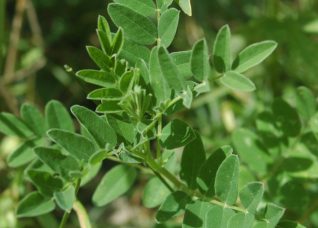
MinerAlert

MinerAlert
Astragalus propinquus
Fabaceae
Huang-qi, huanqi, membranous milk vetch (Quattrocchi, 2012).

This species grows in Asia, principally in Mongolia and China.
The root, stems, and leaves.
The root is decocted in water and taken as a tea. There are various herbal supplements that contain the pulverized root or extracts obtained from it, in capsule or tablet form; alone or in combination with other medicinal plants.
Mongolian milk vetch or huang zhi root and stems possess diverse healing properties, according to Chinese and Mongolian traditional medicine. Some of these actions include the following: antibacterial, antitumor, diuretic, cardio-tonic, fever reducing, blood glucose lowering, uterine tonic, pectoral, lowering blood pressure, for kidney diseases, diarrhea, as a vasodilator, chronic ulcers and abscesses, as well as for anal or uterine prolapse. The root can augment the production of macrophages and interferon, acting as an immune system modulator (Quattrocchi, 2012; Li, 2009). Additionally, the plant is used to treat lung fever, to treat oliguria (scant urination), hemorrhoids, and to improve bodily strength. The herb is considered sweet to the taste, but hot in potency (WHO, 2013).
The plant contains more than 100 phytochemicals including saponins, polyphenolic compounds, and complex polysaccharides (Fu et al., 2014; WHO, 2013, Li, 2009). The root of Mongolian milk vetch (known in China as huang-zhi) is one of the most widely used herbs in Traditional Chinese Medicine (TCM) for preventing and treating heart problems, especially myocardial ischemic diseases (Ma et al., 2013). In TCM, huang zhi root is popularly used for its immune-stimulating, tonic, antioxidant, liver-protective, diuretic, anti-diabetic, anticancer, and expectorating actions (Fu et al., 2014).
A review of the scientific literature showed that huang zhi is a main component of various Chinese herbal formulas to combat diabetes, due to its content of various anti-diabetic compounds including polysaccharides, saponins, and flavonoids (Zhang et al., 2014).
Since huang zhi, either alone or in combination with Dong Quai (Angelica sinensis), has been used for millennia in TCM for kidney disease, Shahzad et al. (2015), investigated the manner in which ethanol, methanol and aqueous crude extracts obtained from the roots of the two plants could protect human kidney cells, employing an in vitro model of oxidative stress. The results of the study showed that, in a model of oxidative stress that could happen after kidney toxicity, the two plant extracts showed a protective effect via anti-apoptotic (preventing programmed cell death) and anti-inflammatory activities. Additionally, studies have shown that huang zhi root may be of benefit in the treatment of systemic lupus erythematosus (SLE), a complex autoimmune disease (Pan et al., 2008).
An in vivo and in vitro study evaluated the cardio-protective effect of a huang zhi root extract in myocardial ischemia and investigated its mechanisms of action in a reactive oxygen species (ROS)-mediated signaling cascade. The results of the study showed that the mechanisms of action for cardio-protective effects of the plant’s ingredients contained within root extract could involve improving cardiac function, diminishing the injury by oxidative stress, and maintaining antioxidant enzymes to reduce the amount of free radicals that cause damage to myocardial cells (Ma et al., 2013).
A clinical trial assessed the efficacy and safety of a proprietary supplement containing huang zhi root, for the treatment of patients with seasonal allergic rhinitis (SAR). This plant is an active ingredient of the herbal and mineral complex registered as a food supplement in Croatia. This product was used in a 6-week, double-blinded, placebo-controlled clinical trial with 48 adult patients who suffered from moderate to severe SAR. The results of the study showed that the herbal supplement containing huang zhi root significantly decreased the intensity of rhinorrhea (runny nose), compared to placebo. The authors concluded that the herbal supplement was therapeutically efficacious in patients with SAR (Matkovic, et al., 2010).
Safety/Precautions:
Before you decide to take any medicinal herb or herbal supplement, be sure to consult with your health care professional first. Avoid self-diagnosis and self-medication: Always be on the safe side!